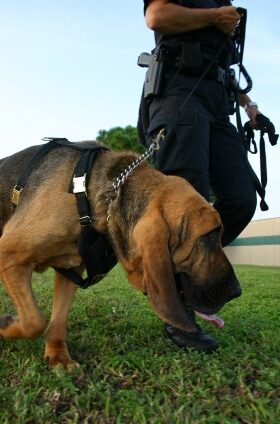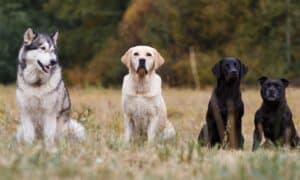“This post contains affiliate links, and I will be compensated if you make a purchase after clicking on my links.”

Description
The Bloodhound, also known as the St. Hubert Hound, is a well-liked breed of dog that originated in Belgium. The breed belongs to the Hound family which is remarkable for their excellent hunting skills. Bloodhounds have been bred to become exceptional scent trackers. In fact, the breed is one of the oldest sniffing dogs in history. Their wrinkled coat is short and relatively hard in texture. Its colors may come in various combinations such as liver and tan, black and tan, tawny and red, and red with some white markings.
Height and Weight
The male members of the Bloodhound breed usually stand a 25 to 27 in height at the withers, and weigh 90 to 110 lbs. Bitches, on the other hand, normally have a height of 23 to 25 in, and a weight of 80 to 100 lbs.
Temperament
Bloodhounds are gentle and affectionate dogs. They are friendly with children, though can be rather reserved with strangers. They tend to enjoy the attention from human, and generally make good natured pets. The breed is known to be very curious and playful. They tend to be extremely energetic outdoors, and quite boisterous when young. They are described to be diligent sniffers outdoors. Bloodhounds rarely bark, though may act dominantly when around other dogs of the same sex, and small pets. The breed needs a master who uses stern but calm authority. Proper socialization will keep Bloodhounds from becoming timid.
Grooming
Bllodhounds usually require minimal grooming requirements; except during their shedding seasons. Despite considerable coat care efforts, however, the breed always exude heavy houndy odor. Make sure that their dewlap, ears, and facial folds are kept clean, well-moisturized, and infection-free.
Health Concerns
This massive hound breed relatively lives a short life. To be specific, Bloodhounds merely have an average lifespan of 7 to 10 years. Some of the common health problems known to plague them include chronic heart diseases, elbow dysplasia, hip dysplasia, stomach problems, allergies, entropion, and ear infections.
Best Environment
Members of the Bloodhound breed generally require a large secure area to roam. They prefer a cool and moderate living atmosphere for they hardly tolerate heat. Apartment-living, nonetheless, will be fine for them so long as the Bloodhounds get to receive sufficient exercise. They are rather inactive indoors. In addition, the breed needs plenty of exercise. They love to run and should be taken for long walks every day. They have a great stamina level; enabling them to walk for hours. They love to hike, though overtiring them needs to be avoided until they become adults.
















